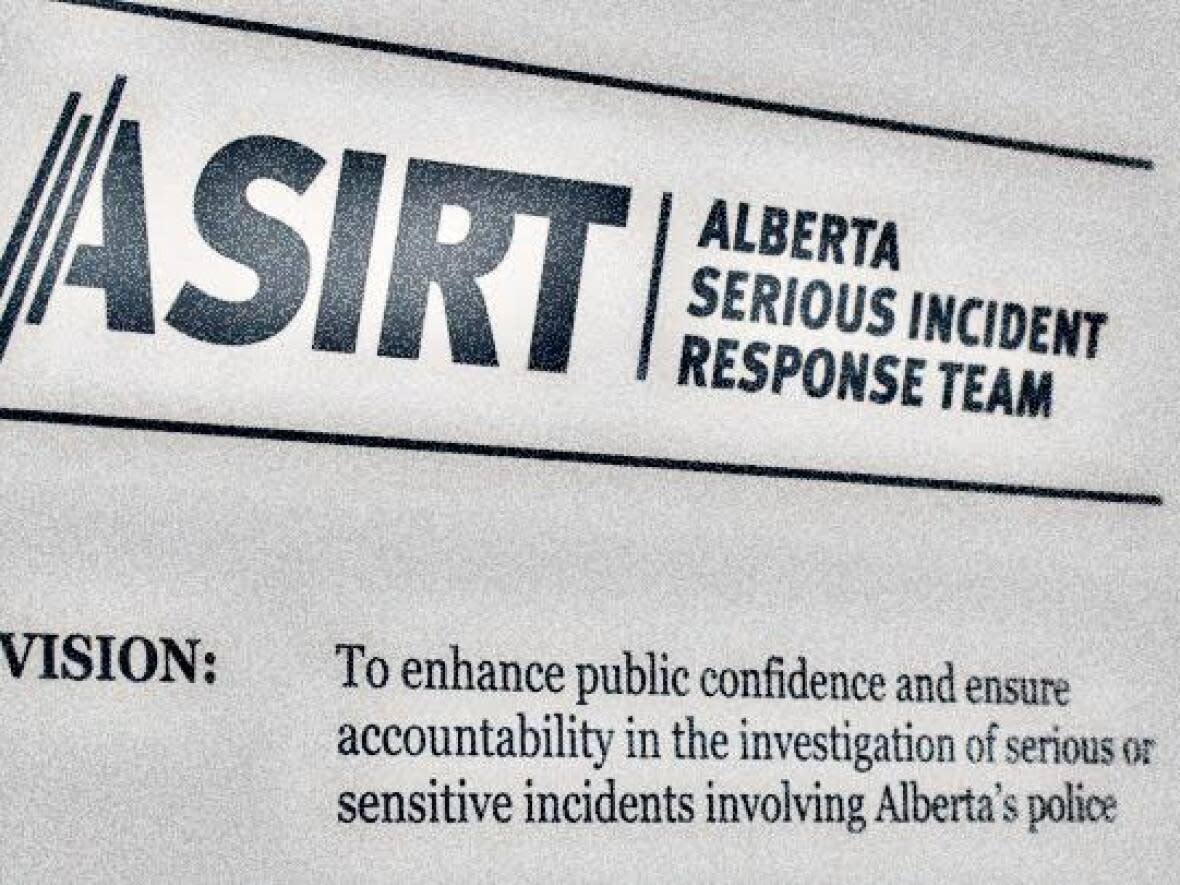Calgary officer cleared in fatal shooting on Christmas 2018

No charges are being recommended against a Calgary officer who fatally shot a 30-year-old driver suffering from mental health issues on Christmas Day in 2018, although provincial investigators say serious breaches of police policy by supervising officers led to the tragic situation.
In a decision released Friday, the Alberta Serious Incident Response Team (ASIRT) said, after a review of the evidence, "there are no reasonable grounds to believe that the subject officer committed any offence," adding his conduct should be judged "through the lenses of his training and the situation in which he was placed."
The officer was not named in the decision, and he gave no statement to investigators.

According to ASIRT's analysis, the officer followed the directions of his supervisors to perform a high-risk traffic manoeuvre for which he had not been trained. This resulted in a dangerous situation for himself and fellow officers, and, in just seconds, escalated into gunfire and the death of a woman, identified previously by family as Stacey Perry.
In the conclusion of the report, ASIRT pointed a finger at Calgary police, saying "the issue of policy breaches is ultimately one for CPS to address."
Calgary police issued a statement following the decision. It said the shooting had a "substantial impact" on the organization and resulted in significant changes over the last few years. These included updates to polices around vehicle-based tactics and criteria for their use. Additionally, all patrol officers now receive training in such vehicle-based tactics, which wasn't the case in 2018.
"This work remains ongoing and we are currently exploring the use of additional tools and equipment to aid in these situations," police said.
Christmas Day shooting
The fatal shooting happened in the early hours of Dec. 25, 2018. According to ASIRT, the driver involved, Perry, was suffering from mental health issues and under the influence of drugs. The day before, she was hospitalized and had been prescribed a benzodiazepine, a class of depressants used to treat anxiety. Following her death, a toxicology report also found cocaine in her system.
Perry was arrested on drug possession a week before her death, but she had no criminal record or run-ins with police prior to that. Investigators described her as the mother of a young child and a member of a loving family.
Between midnight on Dec. 24 and the early morning hours of Dec. 25, police tried to stop Perry several times over a three-hour period as she drove slowly but recklessly through the city's Inglewood neighbourhood and later northeast Calgary.
While police initially declined to pursue her due to potential risks, they ultimately attempted to box her in on McKnight Boulevard near 68th Street N.E., as she was still driving slowly but erratically.
In the process of the manoeuvre, for which only one sergeant involved had been trained, the driver stepped on the gas pedal, pinning one officer between the driver's vehicle and one of the squad cars. Within seconds, the officer subject to the report shot Perry three times, killing her, although her foot remained on the gas.
According to ASIRT's findings, the officers who were not trained in the box-in technique made tactical errors that left them vulnerable in a dangerous situation. At the time, only officers in the tactical unit were trained in the box-in technique.
"Whether officers follow police policy in the execution of their duties can impact their criminal liability," ASIRT said in explaining its findings. "In this situation, however, the issues related to policy and the use of this vehicle technique do not apply to the subject officer. The subject officer had not been trained in the box-in manoeuvre used, and his participation in the box-in manoeuvre was at the direction of superior officers. There is therefore no connection to any criminal liability on his behalf."
ASIRT investigators noted it's unclear if the box-in technique would have been permitted under police policy at the time, as the woman's driving might not have posed "a reasonable likelihood of death or grievous bodily harm," given that she was driving slowly amid little traffic.
"Had CPS policy been followed, it is likely that other options for dealing with the woman's vehicle would have been used," the ASIRT report said.
ASIRT is tapped to investigate any time a person is killed or seriously injured by police.


